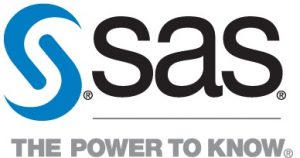
I've worked at SAS for over 27 years and have often been asked: What does SAS do? or Why should I choose SAS? It all boils down to one question: Why SAS?
While there are many approaches to answering this question, I recently came up with three short, yet powerful, responses:
1. SAS solves your problems, any problem, using any data, across any domain, in any industry, and using any type of analytics.
As SAS co-founder and CEO Dr. Jim Goodnight has said: "SAS is the first company to call when you need to solve complex business problems." Regardless of what industry you're in, when you have a problem to solve, step one is collecting data, and SAS can:
- Access data from any source, whether it's structured or unstructured (i.e. text).
- Apply any type of analysis: descriptive and predictive, forecasting, and/or optimization.
- Deploy the results of this analysis throughout your organization.
You can read about all of the interesting problems we help our customers solve in our customer stories section on www.sas.com.
2. SAS automates your processes, including data management and preparation, processing of analytics, monitoring results, deployment, retraining and reporting.
SAS is most well-known for analytics, however, it should be as well-known for its ability to automate all of the processes associated with the entire analytics lifecycle, regardless of the size of the data involved. SAS provides a platform unparalleled in its capabilities to automate the data management, data quality and data preparation steps needed to get data in the proper format for advanced analytical analysis.
SAS can also help automate steps in the model development process (such as our advanced hyperparameter auto-tuning feature), as well as automate the processes involved in monitoring and replacing models in production. Automating the processes that surround the analytics lifecycle helps improve your company's time-to-value for its analytics investment.
3. SAS scales your productivity.
SAS improves the speed of analytical processing and the ability to deploy results across multiple channels which results in more employees across your organization using analytics to be more productive.
In addition, SAS' easy-to-use interfaces allow a wide range of users (both technical and nontechnical employees) to use analytics to help them work more efficiently. SAS also supports a white box approach that allows for better auditing and governance policies.
SAS' automation capabilities, its easy-to-use interfaces and its designed-to-scale architecture not only allows SAS to scale for any size data, but more importantly, it scales the value that your employees can produce on a daily basis. But don't take our word on it -- read how our customers did it, in stories like this one: Industrialized modeling helps free-to-play video games earn big profits.
